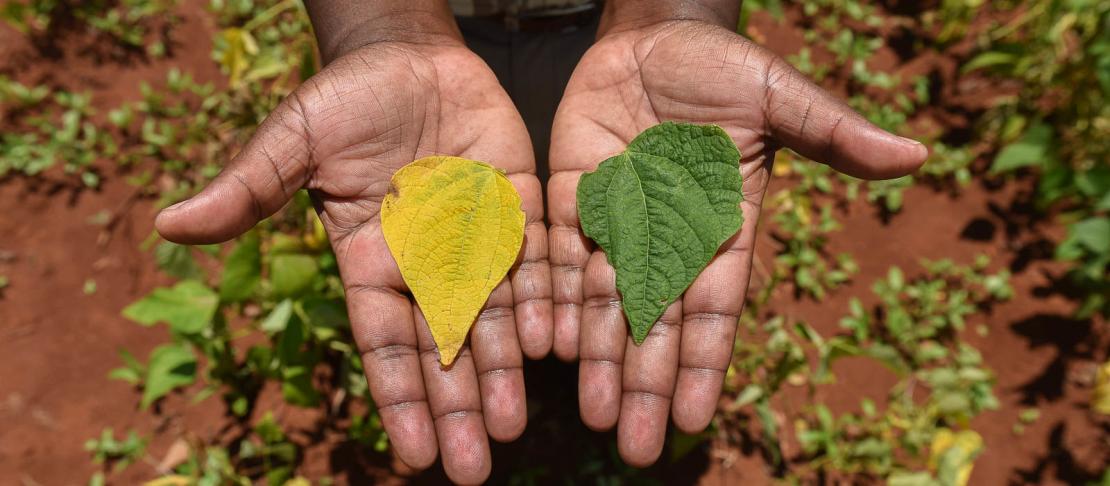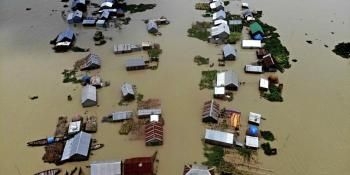World Environment Day: Highlighting the value of climate-resilient seeds

Climate change is already affecting crop and livestock production in many parts of the world; it threatens food security in a lot of tropical countries, where a large proportion of food is produced by vulnerable smallholder farmers.
There are interventions available to offset many of the negative impacts of climate change on agriculture. These interventions can be tailored to local conditions, often through relatively modest investments. At the same time, there is not enough quantitative information available to guide these kinds of investments or policy choices.
In a recent paper authored by Oscar J. Cacho et al.,* scientists use national and local data to estimate the cost of climate change to smallholders in Malawi and Tanzania as well as look at the benefits of adopting climate-resilient seeds. The study estimates that the benefits of adopting resilient seeds ranged between USD 984 million and 2.1 billion during 2020–2050.
Read the paper: The value of climate-resilient seeds for smallholder adaptation in sub-Saharan Africa
Climate-resilient seeds proven to be a successful adaptation strategy
One fundamental and proactive adaptation strategy widely applicable in climate hotspots is providing farmers with access to improved and adapted seeds that are heat- and drought-tolerant and high-yielding. The use of improved seeds in poor smallholder systems has been found to increase both productivity and income. Between 1980 and 2010, the use of improved crop varieties in sub-Saharan Africa was estimated to have increased productivity by an average of 47% and is known to have played a significant role in reducing poverty in several sub-Saharan African countries.
Targeted policies are needed to ensure that appropriate interventions can be adopted in the time frame and scale needed. At present, breeding, delivery, and adoption (BDA) of new crop varieties may take 30 years, and shortening this cycle is a priority for adaptation. This study aims to inform policy and guide investment to increase food security.
Estimating the costs and benefits under four scenarios
The study considers four scenarios: representing no climate change and three representative concentration pathways (RCP), which can be characterized as optimistic, intermediate, and pessimistic. The time horizon of the analysis is 30 years (2020–2050), in line with other studies on the impacts of climate change in agriculture. Two types of input data are used: nationally representative farm household survey datasets and projections of crop prices and yields under alternative climate scenarios.
The crops available for selection in the optimization model were based on those present in the farm household survey datasets. The main crop cultivated in both countries was maize, with 79% and 49% of households cultivating this crop in Malawi and Tanzania, respectively.
The financial impacts of climate change on smallholders were estimated as the difference in cropping revenues between the no climate change case and each RCP scenario. Results indicate that expected farm revenues beyond 2020 will be lower for both countries under climate change compared with the no climate change case, despite farmers adjusting their crop mix to respond to changing prices and yields.
In annual terms, the costs of climate change to smallholders are equivalent to USD 103 (± 79) million per year for Malawi and USD 520 (± 64) million per year for Tanzania. At the farm level, these represent average annual income reductions of 7.7% and 5.1%, respectively, and this is after autonomous adaptation to yield and price changes caused by climate change. In short, without more concentrated adaptation actions, some of the poorest people on Earth are likely to experience significant cuts in their incomes—and food security.
Seeds that are drought- and heat-resistant can increase yields by up to 25% under climate patterns expected in Africa by 2050 with RCP 8.5, which is the “business-as-usual” scenario.
An optimistic scenario where these improved seeds are available for all main crops starting in 2020 results in aggregate benefits of USD 635 million in Malawi and USD 1,470 million in Tanzania. Although this will not be achievable, it shows the potential benefits of early planning for climate change adaptation, focusing on the main crops in addition to maize.
In the second scenario, the authors assumed that these improved seeds only become available in 2030. In this case, smaller but still significant benefits are obtained (at USD 524 million in Malawi and USD 1,156 million in Tanzania).
In the third scenario, it was assumed that the availability of improved seeds starts only in 2040. In this most pessimistic case, the benefits of policies to promote the adoption of improved seeds have decreased to USD 315 million for Malawi and USD 669 million for Tanzania. In terms of annual benefits per hectare, there are variations among agro-ecological zones, with higher benefits generally accruing to warmer regions compared with cooler regions, but with some variation arising from geographical differences within agro-ecological zones.
Promising results
The analysis focuses on only one aspect of climate change adaptation—enhancing the production and adoption of improved seeds adapted to changing climate conditions. Even with the conservative assumptions regarding potential yield improvements, the results indicate that the benefits to pursuing this strategy can be sizeable in some agro-ecological zones, but obviously, it is expected that a richer portfolio of complementary policies would lead to higher benefits.
Using an integrated modeling approach, the study shows that investments in the seed sector now can avoid some of the considerable costs that climate change is likely to impose on poor and food-insecure farmers in sub-Saharan Africa and allow them to achieve productivity and income gains.
Evidence from previous studies indicates that for effective adaptation, an entire package of complementary measures is needed. The costs of an integrated adaptation package will be higher than those of an intervention into a single sector as presented here, but the benefits will also be higher.
There is significant overlap in the types of policies that are good for agricultural development in general and those required for climate adaptation, but climate change brings urgency to these actions and requires investments to focus on expected future conditions that differ spatially and are subject to high uncertainty.
Investing now in capacity to develop and apply key technologies may take a decade or longer to bear fruit, hence the urgency to act now. There is also a need to apply similar analyses for broad sets of climate-smart practices, especially now as countries are seeking to implement their Nationally Determined Contributions (NDCs). This kind of information can help them to identify policy mixes that will provide the highest return on investment.
* The journal article was authored by Oscar J. Cacho, Jonathan Moss (University of New England), Philip Thornton (CGIAR Research Program on Climate Change, Agriculture and Food Security (CCAFS)), Mario Herrero, Ben Henderson (Commonwealth Scientific and Industrial Research Organization (CSIRO)), Benjamin L. Bodirsky, Florian Humpenöder, Alexander Popp (Potsdam Institute for Climate Impact Research (PIK)) and Leslie Lipper (Independent Science and Partnership Council, CGIAR).



